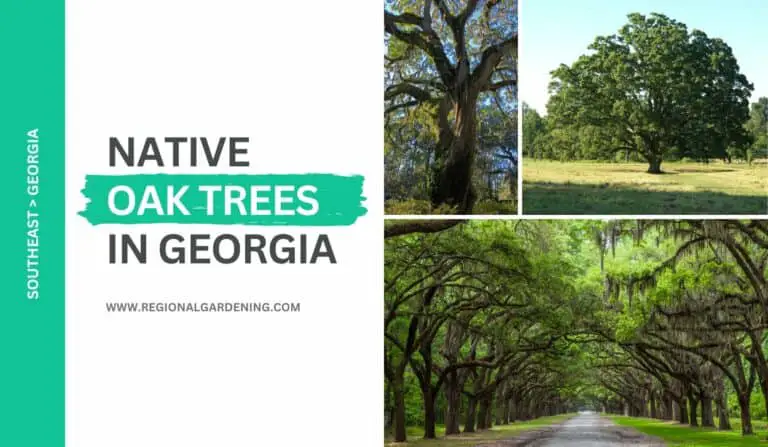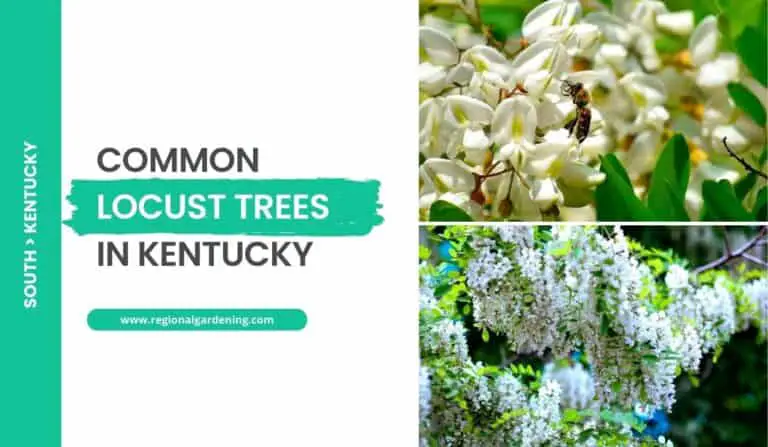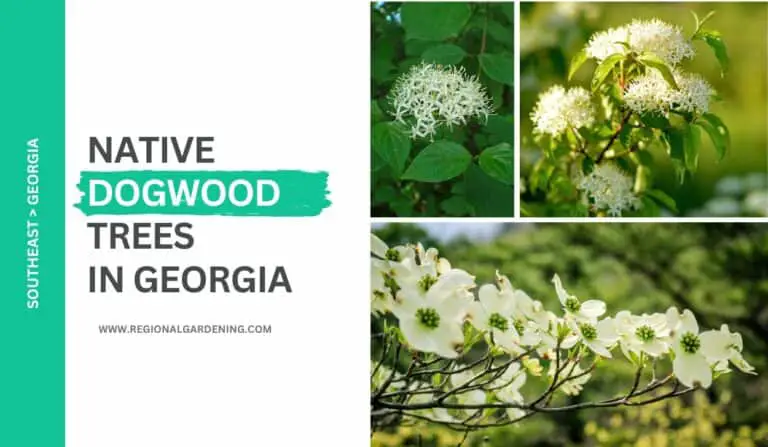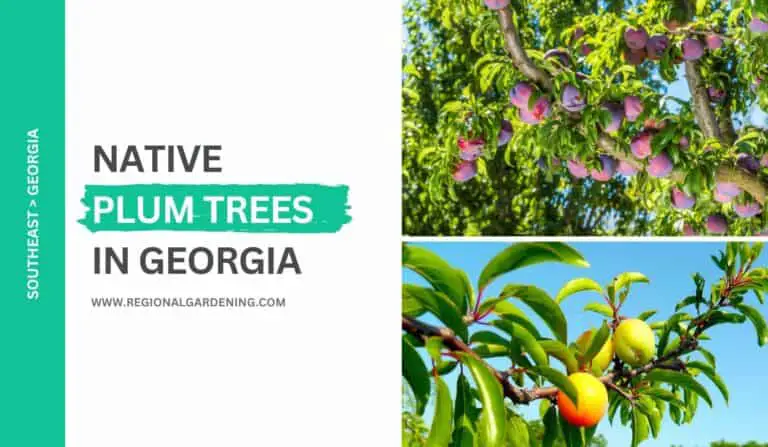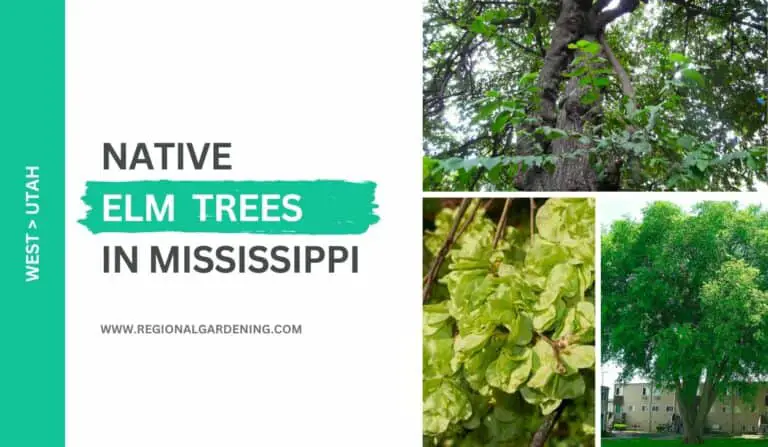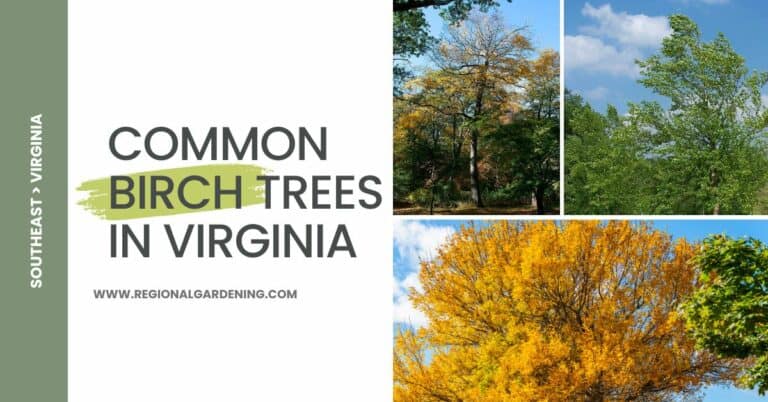4 Native Plum & Cherry Trees In Mississippi (Photos & Details)
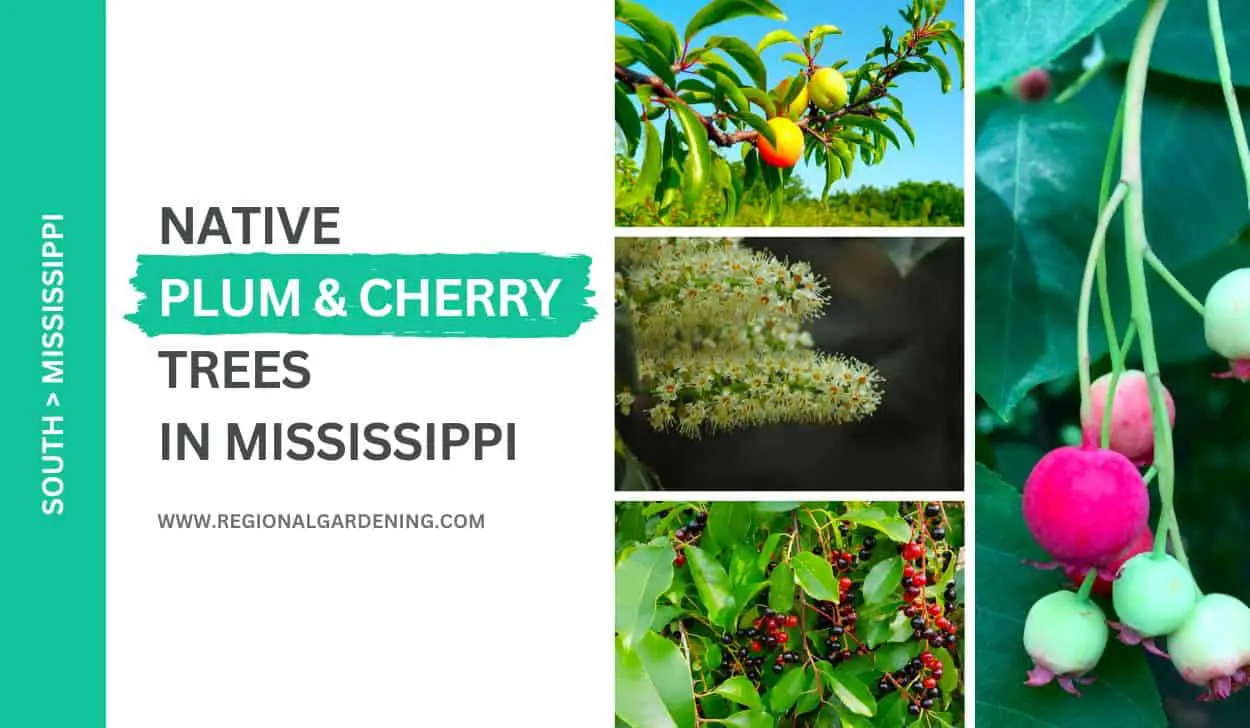
Native plum and cherry trees quietly flourish in Mississippi’s diverse landscapes, gracing the surroundings with their mesmerizing beauty. Although most native plum and cherry trees in Mississippi are not intended for human consumption, they are significant as ornamental wonders and vital wildlife sanctuaries.
The native plum and cherry trees blooming in pretty pinks and whites create a picturesque scene that is hard to take your eyes off.
These trees are more than just a pretty sight; they provide essential habitat for the local flora and fauna. Here I will provide a detailed introduction to the four species of native cherry and plum trees found in Mississippi.
So, let’s get started.
1. Carolina Laurelcherry
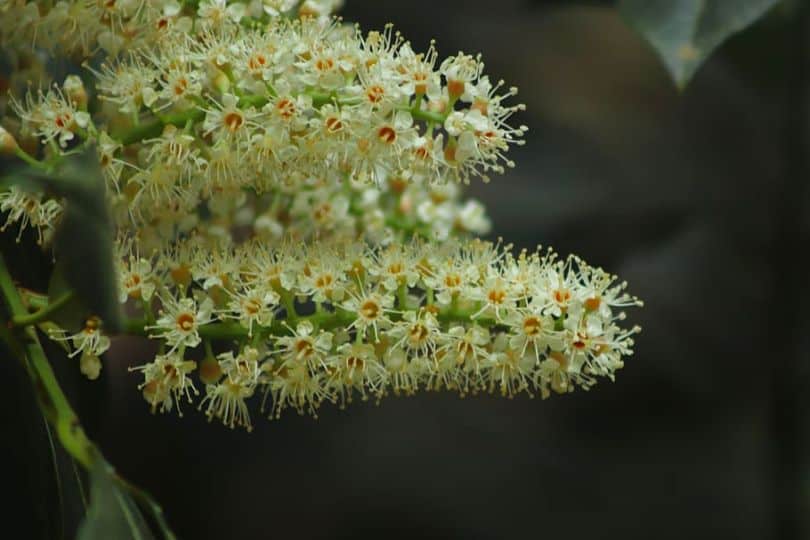
- Scientific Name: Prunus caroliniana (Ait.) Mill.
- Common Name(s): Carolina Laurelcherry, wild orange, mock orange
- Mature Height: 30.0’ – 40.0’
- Native Range: Native to the Southeastern United States
- Flowers: Monoecious, white-orangish center with 5 petals.
- Uses: Ornamental trees, wildlife food, and shelter.
Carolina Laurelcherry, scientifically known as Prunus caroliniana (Ait.) Mill, is a deciduous tree native to the southeastern United States. It is also known as “wild orange” or “mock orange.” The tree matures at a height of 30.0′ – 40.0′ and grows at a moderate rate.
Carolina Laurelcherry leaves are simple, alternating, and durable. They have an oblong-lanceolate shape and a dark green tint. The leaves are around 2.0″ – 5.0″ long and 0.75″ – 1.5″ broad. The leaf margins are either whole or slightly serrated, producing a wavy look. The base is wedge-shaped, while the apex is acuminate, generating a short distinct point. The leaves are glossy on top and pallid on the bottom.
The Carolina Laurelcherry bears glossy, dry drupe fruits. They have a diameter of 0.5″ and are oblong. The fruit stone is ovoid with a sharp, rounded base. The fruit fluctuates in hue from black to blue-black.
The tree also produces exquisite monoecious flowers. They have five petals and develop in racemes on short axillary stalks. The flower’s center appears white to orangish and is highly noticeable.
Because of its lovely foliage and delicate blossoms, this tree is frequently used as an ornamental. Because of its dense growth habit, it is also widely planted as a privacy hedge or screen. Although people don’t typically eat fruits, they do offer food and shelter to a variety of wildlife species.
The Carolina Laurelcherry is shade and drought-tolerant, but not fire-resistant. It has one or more stem forms and a lifespan of less than 50 years.
2. Black Cherry
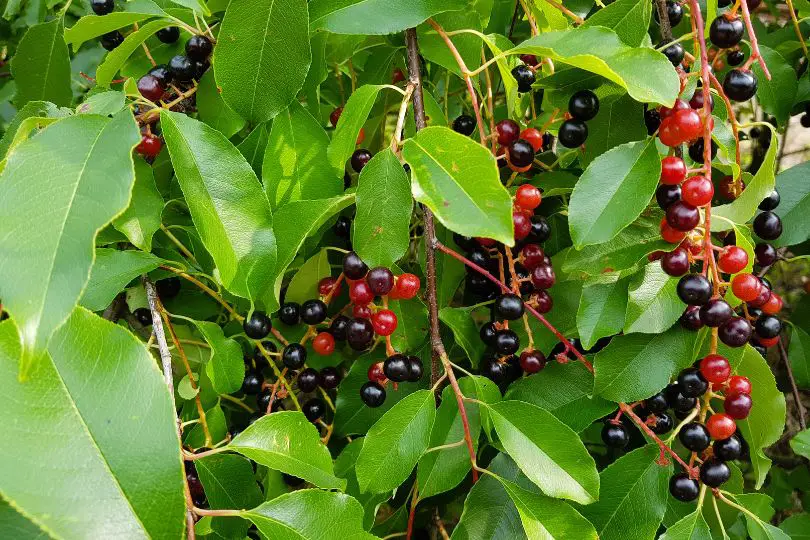
- Scientific Name: Prunus serotina Ehrh.
- Common Name(s): Black Cherry, wild black cherry, rum cherry, mountain black cherry
- Mature Height: 80.0′
- Native Range: Widespread in North America.
- Flowers: White flowers with 5 petals.
- Uses: Wildlife food, ornamental landscaping, wood for cabinets, interiors, etc.
Black Cherry (Prunus serotina Ehrh.) is a deciduous tree with simple leaves that is also known as wild black cherry, rum cherry, or mountain black cherry.
The leaves are 2.0″ – 6.0″ long and 1.0″ – 1.5″ broad, with a dark green upper surface and a whiter below surface. When mature, the twigs are slender and reddish brown in hue. The tree bears tasty drupe fruits that range in color from dark purple to black and have a spherical form. The flowers are white and appear in racemes with numerous blossoms.
Black Cherry grows to a mature height of 80.0 feet and is native to a wide range of habitats, most typically in mixed stands with oaks, ashes, hickories, and yellow poplar. It favors deep, rich, moist soils but will thrive on sandy soils as well.
The tree grows quickly and has a modest lifespan of more than 50 years. It is shade-intolerant and has a limited fire tolerance. Black Cherry is found in several states in eastern North America, including Canada, Mexico, and Guatemala.
Many bird species, game birds, and animals such as red foxes, black bears, raccoons, opossums, squirrels, and rabbits feed on the fruits of the Black Cherry tree. Black Cherry wood is highly regarded for its use in cabinets, furniture production, paneling, interior trim, veneers, handles, crafts, toys, and scientific instruments. It is robust, firm, and close-grained, with a deep reddish-brown color.
Black Cherry is an excellent choice for semi-natural woodland gardens. However, because it produces an abundance of luscious fruits in the summer, leaves fall off in the autumn, and a lot of seedlings appear the following spring, it might be too messy for more formal settings.
So, if you’ve only got time and money to maintain the garden, then these are a perfect choice as cherry trees in Mississippi.
3. Common Serviceberry
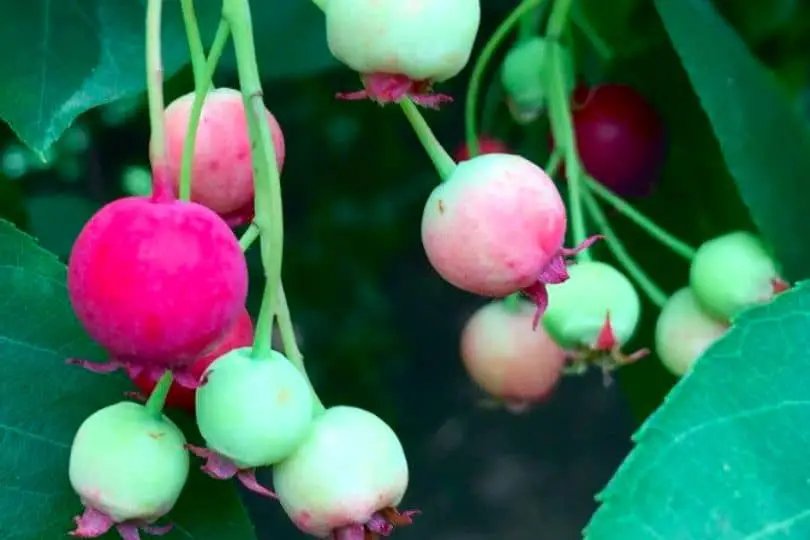
- Scientific Name: Amelanchier aborea (Michx. f.) Fern.
- Common Name(s): Common Serviceberry (Downy), Sarvis-berry, shadblow, shadbush, juneberry, sugarplum, Indian cherry.
- Mature Height: 50.0′.
- Native Range: Scattered throughout North America.
- Flowers: White bell-shaped flowers.
- Uses: Wildlife food, pulpwood, tool handles, and ornamental landscaping.
Downy Serviceberry, also known as Common Serviceberry, is a deciduous tree with simple, alternating leaves. The leaves are oval to oblong in form, yellow-green on top and paler on the bottom.
The tree can reach a height of 50.0′ and grows at a moderate rate. It loves dry limestone soils, slopes, and ridges, but it can also be found on sandy loams found along streams and riverbanks. This tree tolerates shade and is moderately resistant to drought and fire. It has a life expectancy of more than 50 years.
The Common Serviceberry produces little, tasteless pomes with numerous small seeds. The fruit is around 0.50″ in diameter and reddish-purple in hue. The tree also has white, bell-shaped flowers in racemes on short stalks. With five obovate petals, these flowers are monoecious and perfect.
The Common Serviceberry is valuable for both wildlife and wood. Over 40 bird species and numerous small and big mammals, including squirrels, foxes, deer, elk, and black bears, rely on fruit and foliage for food and cover.
The tree is also used for pulpwood and tool handles. The Common Serviceberry is a good attractive tree in landscaping. It blooms in early spring and has brilliant fall hues ranging from orange, red, gold, and green blends.
4. Chickasaw Plum
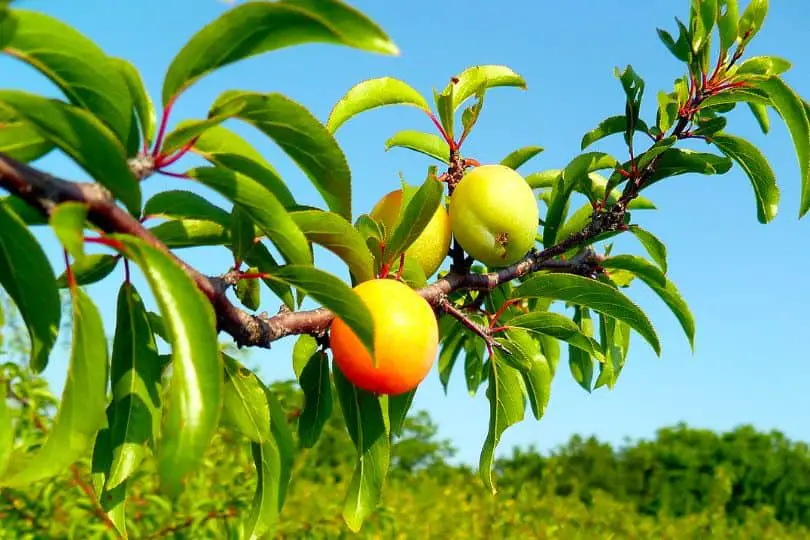
- Scientific Name: Prunus augustifolia Marshall
- Common Name(s): Chickasaw Plum
- Mature Height: 12.0’ – 25.0’
- Native Range: Scattered throughout Mississippi.
- Fruits/Flowers: Small white flowers with 5 petals.
- Uses: Fruit eaten by deer, bear, raccoon, squirrel, and birds
The Chickasaw Plum, Prunus augustifolia Marshall, is a deciduous tree that grows to a height of 12.0′ – 25.0′. It is most typically found on sandy soils and in disturbed areas such as roadsides, fence rows, and old fields.
The leaves on this tree are brilliant green and lanceolate to oblong-lanceolate in form, with coarsely serrate margins. The leaves are 3.0″ long and 1.0″ wide, with a shiny surface on top and a dull surface on the bottom.
The Chickasaw Plum produces edible drupes, which have a big stone and measure around 0.5″ to 0.75″ in diameter. Drupes are either yellow or red in hue. The tree also has lovely white flowers that are monoecious and flawless.
These blooms have five petals and a diameter of 0.33″ to 0.5″ and are found in 4- to 5-flowered umbels. Wildlife such as deer, bears, raccoons, squirrels, and birds consume the tree’s fruits.
Chickasaw Plum cultivation is simple, as it can be grown from seed or transplant. It is frequently utilized as a street tree with a single leader or as a specimen tree with many trunks. It’s also popular on middle strips and commercial property entrance roads.
This tree has excellent resprout/coppice potential and is ideal for use in shrub borders or around patios and decks. It does not, however, produce a neat crown and may appear unkempt over the winter.
Native Plum & Cherry Trees In Mississippi (FAQs)
Let’s check out some of the most commonly found plum and cherry trees in Mississippi.
Are there plum trees in Mississippi?
Yes, there are plum trees in Mississippi. Plum trees thrive in Mississippi’s subtropical climate, which features hot summers and mild winters. The diverse landscapes and fertile soils of the state are ideal for a variety of fruit trees, including plums. These trees can be grown in both urban and rural areas of Mississippi, making them common in gardens, orchards, and even natural areas.
Are there cherry trees in Mississippi?
Even though they are not common, there are still a lot of cherry trees in Mississippi. The most commonly found native cherry trees in Mississippi are Carolina Laurelcherry and Black cherry.
What are the common uses of cherry and plum trees in Mississippi?
Cherry and plum trees serve a variety of practical and aesthetic purposes in Mississippi. While cherry trees are not commonly grown in the state due to the climate, plum trees are popular for their tasty fruits and ornamental value. Plum fruits are eaten fresh or made into jams, jellies, and desserts, which contribute to regional cuisines.
These trees also attract pollinators, which helps to increase biodiversity. Plum wood is also used for small-scale woodworking and crafts. In contrast, though less common in the state, cherry wood is highly valued for its rich color and fine grain, making it desirable for furniture and cabinetry. With their vibrant blossoms in the spring and attractive foliage in the fall, cherry and plum trees are popular additions to gardens and parks across Mississippi.
Similar Articles
- Native Flowering Trees In Mississippi
- Common Fruit Trees In Mississippi
- Native Pine Trees In Mississippi
- Common Palm Trees In Mississippi
- Native Oak Trees In Mississippi
- Common Birch Trees In Mississippi
- Native Elm Trees In Mississippi
- Native Magnolia Trees In Mississippi
- Native White Flowering Trees In Mississippi
- Common Pink Flowering Trees In Mississippi
- Native Purple Trees In Mississippi
- Native Ash Trees In Mississippi
- Native Maple Trees In Mississippi
- Native Cypress Trees In Mississippi
- Native Hickory Trees In Mississippi
- Native Nut Trees In Mississippi
Sources
The Regional Gardening team makes sure that the information in our articles is accurate by only using sources that are known to be trustworthy. Some of these sources are peer-reviewed journals from government agencies, well-known universities, and scientific research organizations.
- Native Trees For Mississippi Landscapes, Mississippi State University Extension.
- Mississippi Trees, Publications Of Mississippi Forestry Commission.
- Department Of Plant & Soil Sciences, Mississippi State University Extension.
- Tree Care, Mississippi Urban Forest Council.


